Welcome to this months Focus on Scale. This time we will be paying a visit to Grays Thurrock MBC at Belhus Park for a warship day, visiting Barleylands for the Essex Country Show and continuing the build of a Springer tug.
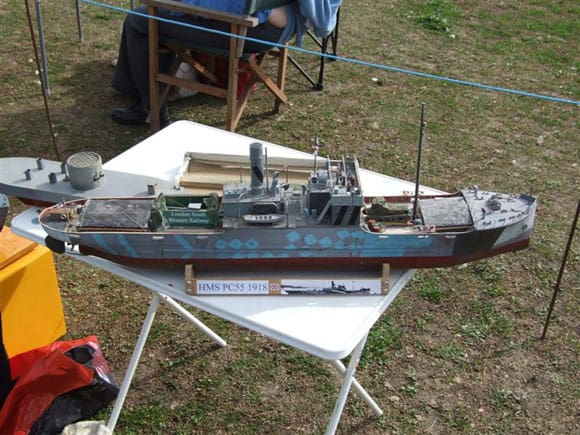
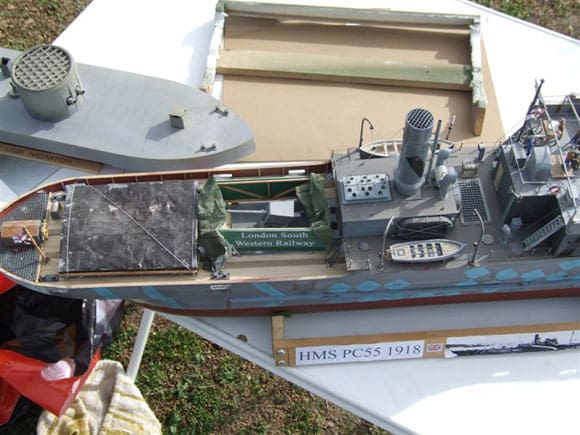
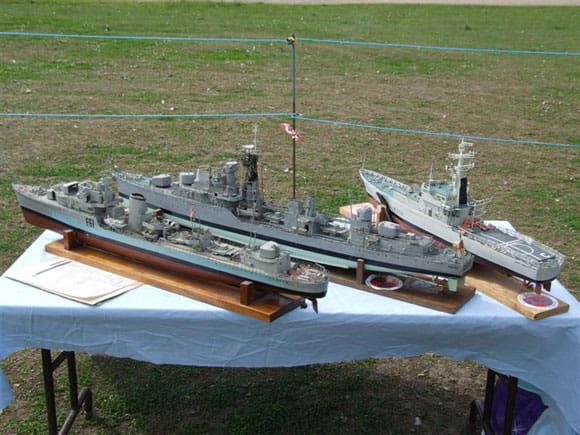
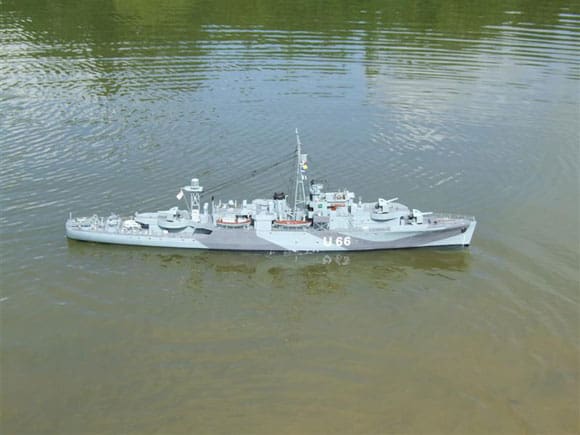
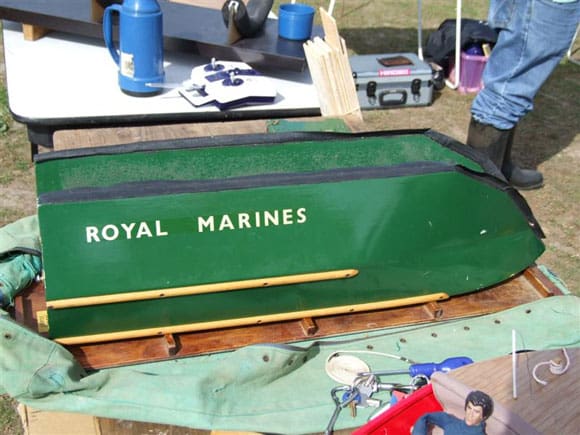
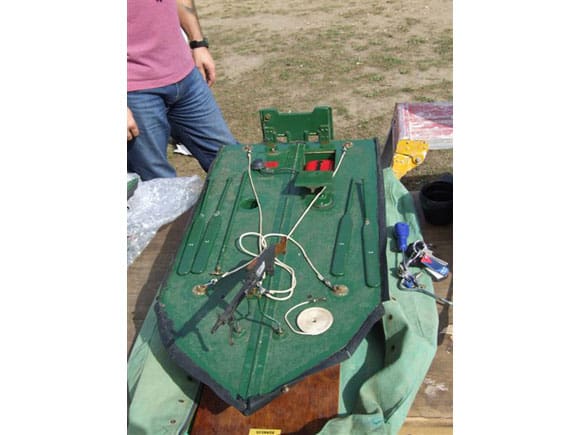
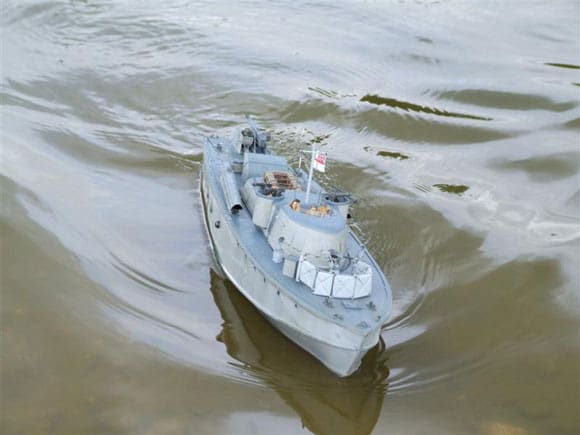
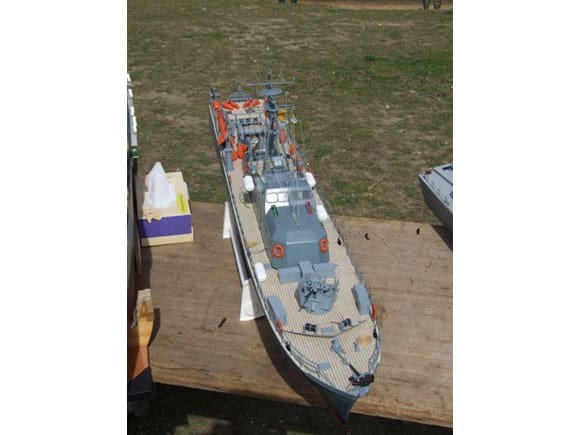
Grays Thurrock MBC Warship Day
Belhus Park in Essex is a few miles from the Dartford River Crossing and is easily accessed from the M25. I was there earlier in the year and welcomed the opportunity to pay a return visit. This time the subject was model warships, but there were other vessels as well. Photo 1 is of a scratchbuilt model by George Hale of H.M.S. PC55. This was a WWI patrol and escort vessel and depicts the vessel as in 1918. As can be seen in Photo 2, PC55 was a Q ship, carrying concealed armament. Georges model is scratchbuilt from balsa covered with styrene, however commercial fittings and crew are also incorporated. Photo 3 is of Bob Hendersons models, H.M. Ships Javelin, Daring and Leeds Castle. Bob was the organiser of the day on behalf of the Surface Warship Association (SWA).
This superb model of H.M.S. Starling, Photo 4, was built by Jim Walker. Based on a Sirmar (PS Ships) hull and fittings, the rest of the model was scratchbuilt over a period of eighteen months and it was only finished in June 2007. Starling is propelled by two Torpedo 810 motors and uses Futaba radio control. Now, as they say, for something completely different. This model of a folding assault craft, Photo 5, was purchased by Steve Johnson from eBay. Photo 6 shows it in its operational state, complete with fuel tanks and armament. It is not known if this was ever built or if this is a model of a prototype.
Enjoy more Model Boats Magazine reading in the monthly magazine.
Click here to subscribe & save.
Another model on the water was Reg Hales MTB, Photo 7. This was based on an Astec ASRL kit and substantially modified. The forward gun is from a Graupner kit, the rear gun is scratchbuilt. Deans Marine 0.303 machine guns are used as 0.5 machine guns, and the gun tubs are made from 35mm film canisters. The crew members are from George Turner Models and the model is driven by a water-cooled 540 type motor using six sub-C NiCad cells for power.
Clem Knowles had brought along his model of a Robbe Schutze, Photo 8. This is one of those models that was quite popular a few years ago, but isnt seen so often nowadays. I did check the Robbe site and couldnt find it listed, although some retailers do have it listed as an updated model.
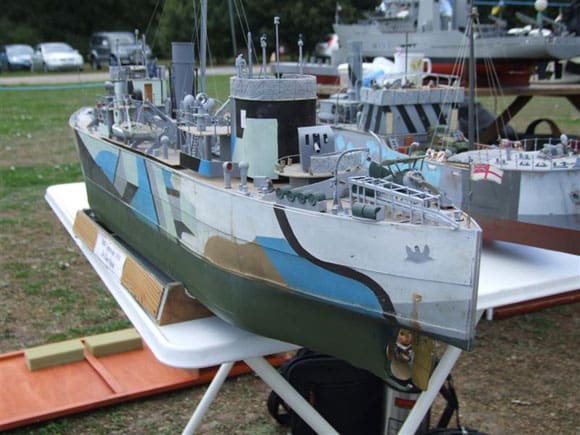
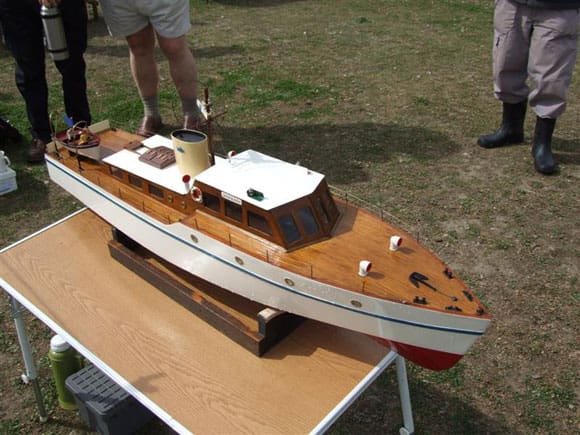
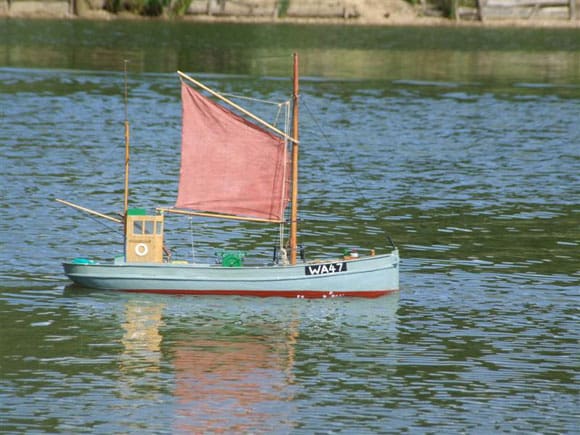
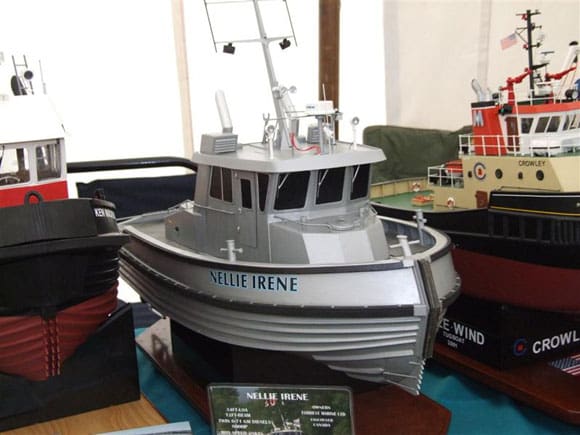
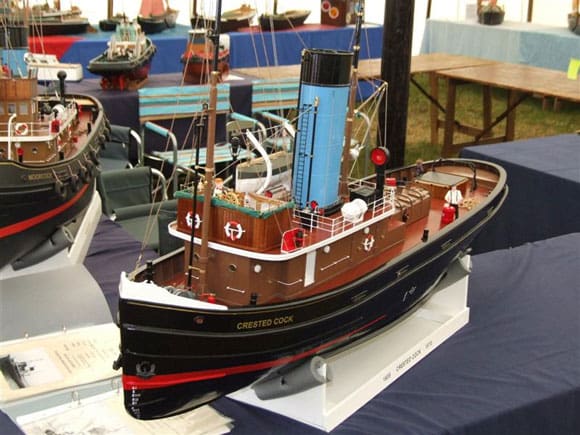
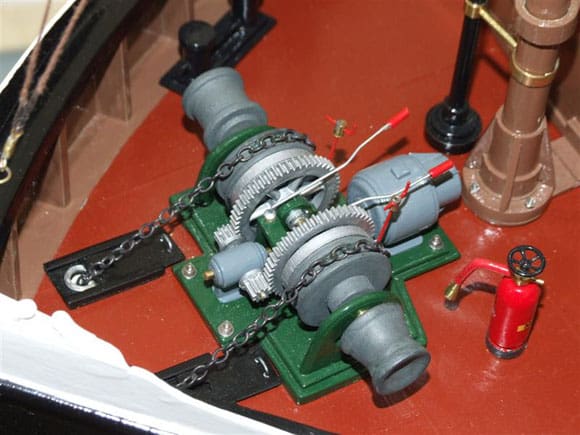
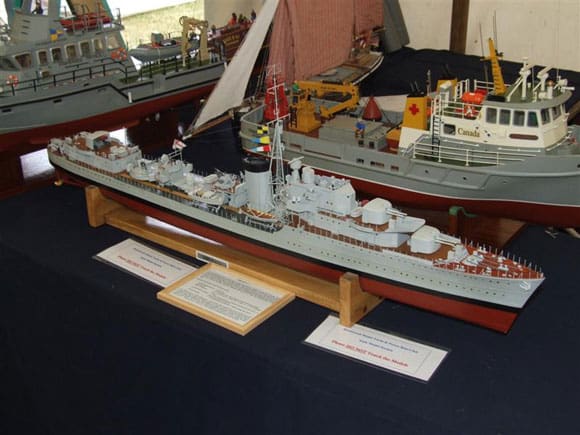
By now I was back to George Hales models and had a look at his model of H.M.S. Ormonde of 1918, Photo 9. These vessels were named after racecourses, but to prevent confusion with the Racecourse Class (paddlers) they were called the 24 class after the number ordered. Designed to confuse the enemy, they had a vertical bow and stern, as well as identical deckhouses and gunshields at each end.
As I mentioned in my preamble, there were other models present as well as those from the SWA. Photo 10 is of Lady Barbara, built by Ray Black, who is the Grays Thurrock Club Secretary. Now fifteen years old, the model was built from yard plans for the full-size vessel which was built for Lady Docker. This had twin steam turbines, however Rays model has two MFA 800 motors with Hitec radio control and is of plank on frame construction.
The final model featured from Belhus Park, is this fishing boat, Photo 11, the Margaret Ann Kirk. I noticed it, because it had been sailing for most of the day as the owner was using a 2.4GHz Spektrum radio and I wanted to ask if he had experienced any interference problems with the other models operating, to which the answer was no. Chatting to John Wilson, the builder of the model, he told me that he had worked on the full-size vessel in 1955 when it was used as a Seine netter. The vessel was originally built in 1890 in Denmark, as a small coaster. Later fitted with a diesel engine she came to England at the beginning of WWII to avoid the German invasion. She was renamed the Margaret Ann Kirk and registered in Whitehaven as WA 47. Used for fishing in the Irish Sea, a refit with a Kelvin diesel took place in the late 1960s/early 1970s. John had built the model from memory. Well that concluded my visit to Belhus Park and the Grays Thurrock MBC and SWA model warship day. Just one week later it was off to another part of Essex.
The Essex Country Show
Held as usual at Barleylands Farm just outside Billericay in early September, this is primarily a rural craft show, with steam engines, both model and full-size, craft stands, food, vintage tractors, cars, commercials and motorcycles, as well as model boats. Held in a large marquee, the model boat side of the show is organised by the Southend Model Boat Club who in turn invite other clubs to exhibit. There is an excellent small lake for the model boats adjacent to the marquee. After dropping off my own boats, as my own club (Brentwood MY&PBC) was exhibiting, it was time for a quick look around and to take photographs before the public were admitted. The Southend club tug specialist, Ray Malone, had an eye-catching model on display, Photo 12. As you can see, the Nellie Irene is finished entirely as if in unpainted aluminium. When I spoke to Ray about it, he assured me that this was accurate. In fact the display nameplate had a picture of the full size vessel on it with further information 34ft loa., 12ft beam, twin 800 h.p. diesels, max speed 28 knots. (There is a forthcoming article on Canadian logging tugs by Jack Gaston – Editor)
Moving on to something a bit more conventional, was this model of Crested Cock, a tug built by John Davidson, Photo 13. Built to a scale of 1/24 using Johns usual technique of plank on frame construction, the build time was seven months. Photo 14 shows just part of the detail of this fine model. Although it was on my own club stand, this model of H.M.S. Kelly was new to me, Photo 15. Built by Robin Lee, the model is based on a Deans Marine kit. It uses two Deans Marine Condor motors, two Electronize 43X electronic speed controllers, Futaba four channel radio and two 7.2v 2000mA NiCad packs for drive motor power and the total build time was 466 hours. The full-size vessel commanded by Lord Louis Mountbatten, was sunk by German dive bombers in the Mediterranean in 1941 with the loss of 130 crew.
On the Moorhen club display, Keith Henley was displaying his model of Roysterer based on the Caldercraft Resolve salvage tug kit, Photo 16 and I particularly liked the display stand.
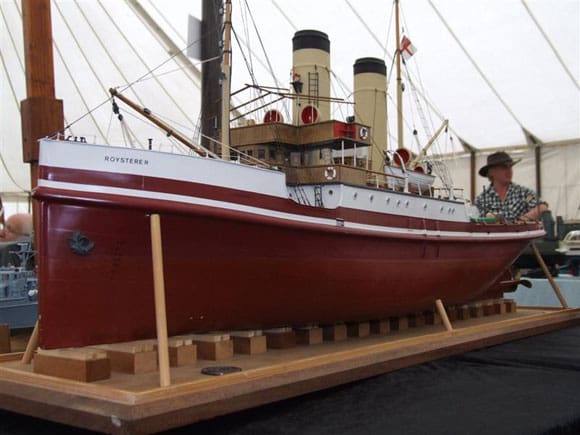
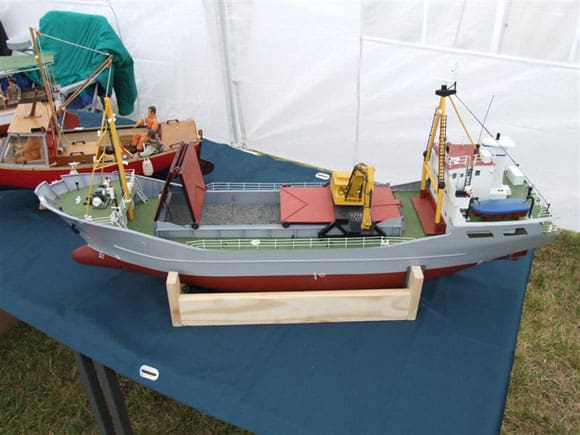
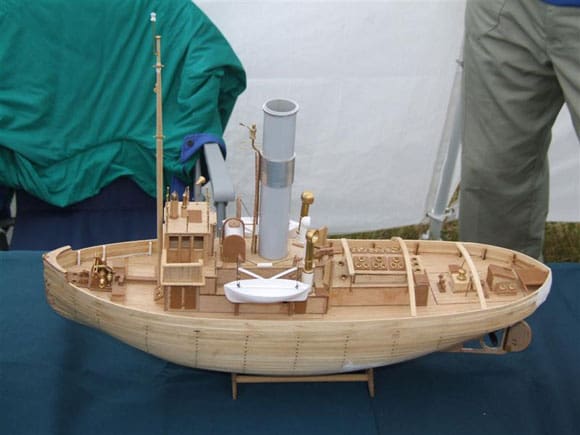
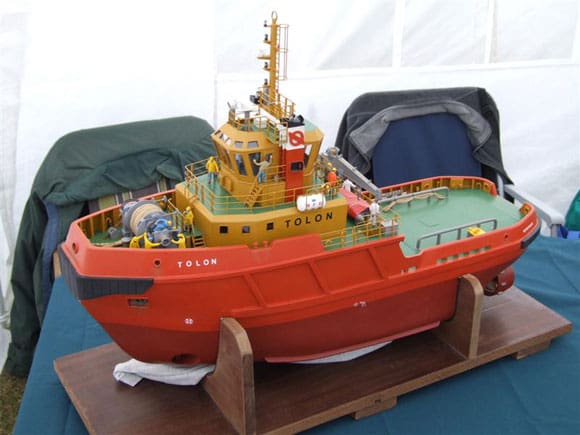
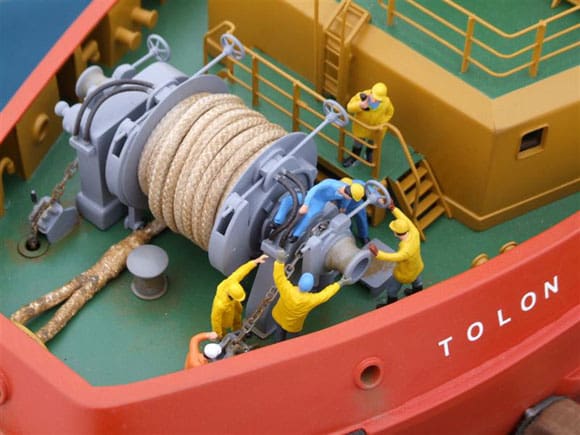
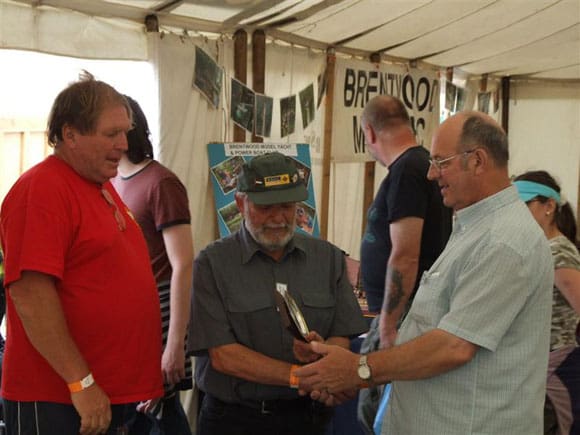
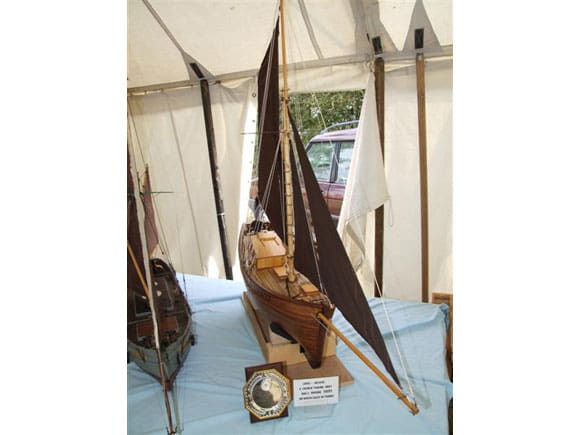
Another club invited to attend was the Wat Tyler MBC who are based at the Motorboat Museum at Pitsea, Essex. As the main marquee was quite full, they had opted to set up using their own gazebos just outside. Photo 17 is Rob Shelleys model of the Model Slipway four hatch coaster. Rob is the Wat Tyler MBC club chairman. His model has a working bow thruster, lights and smoke generator. In addition the hatches open and close and the excavator slews around ready for loading and unloading the cargo. Always of interest to visitors are models under construction. Photo 18 is of Mark Stuchfields Billings kit of the St. Canute and this gives an insight to the materials and methods used in construction of a ship model in traditional style. Another member of the Wat Tyler club, Tony Long, was displaying his fine model of the tug Tolon, Photo 19. Based on the Phoenix Thrax hull, Tony says that the superstructure is from out of his head for this fictional model. Two motors from Model Motors Direct using direct drive, propel the model which uses four channel Futaba radio control. Three Electronize ESCs are used, one for each for the drive motors and the third being used for the working bow thruster. Two 6v 4.5amp batteries are used in series to provide a 12v supply. The model is superbly detailed as can be seen in Photo 20, where it looks as if the winch has need of urgent maintenance. Note also the subtle weathering applied.
During the course of the weekend the models were judged and Photo 21 shows Southend Club President John Chapman (centre) presenting Best in Show to Lou Monk (on right), watched by club chairman Tony Moffat. Photo 22 is of Lous winning model, Louis Heloise.
My final picture, Photo 23, from the Essex County Show is of fellow scribe Dave Wiggins Aerokits Sea Urchin being put through its paces on the lake. My thanks to the organisers for their kind invitation.
Springer Tugs Part Four
Last month I discussed the deck and superstructure, deciding on the type of superstructure I wished to build. For both models, 1/16in ply (WBP) was to be used for the decks and this was duly cut to size. The dimensions of the superstructure were transferred on to these. Before continuing with cutting out the access holes through the deck, I reinforced the sides of the hull that I had built with 6mm ply, to give a more substantial fixing for the deck, Photo 24. The deck with the superstructure dimensions marked out can be seen in the background.
Before finally cutting, trimming and fitting the decks, I decided to make up the superstructures to see that they had the right proportions. I photocopied the sections of the plan I was going to modify, which was the Model Boats free plan for the Motaflote tug and started work on these, Photo 25. You can see from Photo 26 that I widened the superstructure to give me the right proportions to the width of the hull. I also cut it to size, to use as a template for cutting out the plastic card from which the superstructure was to be built.
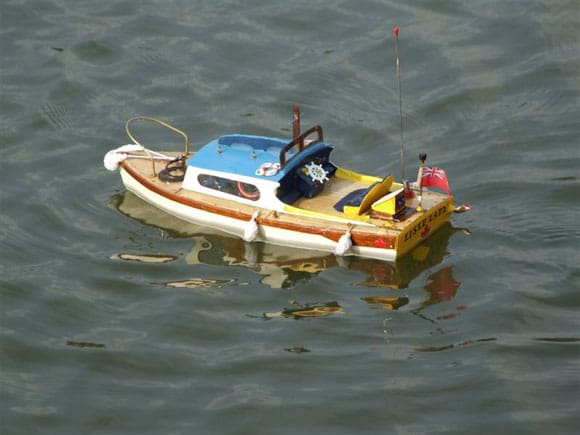
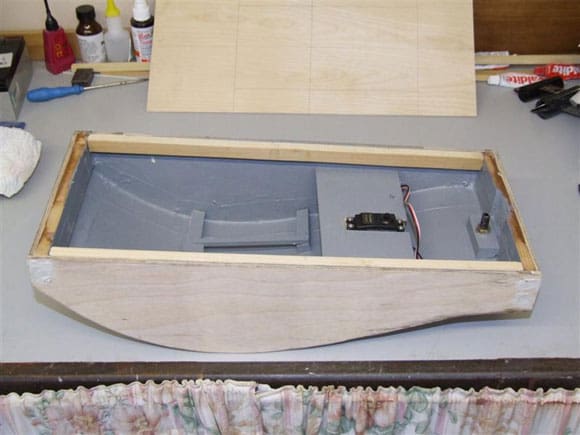
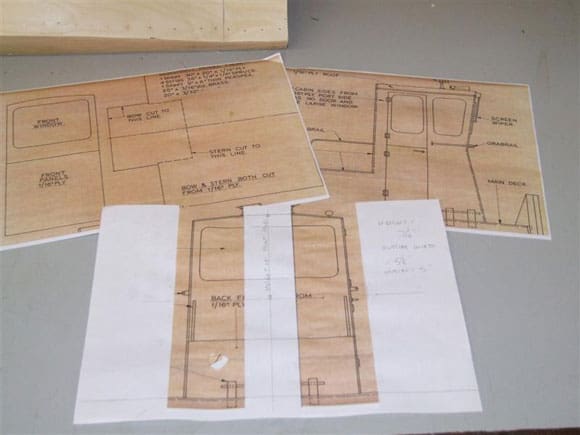
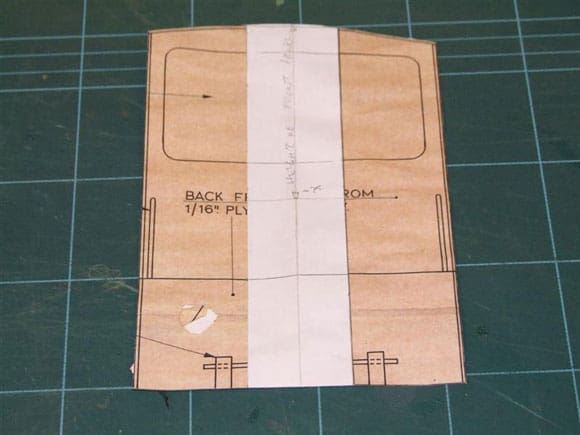
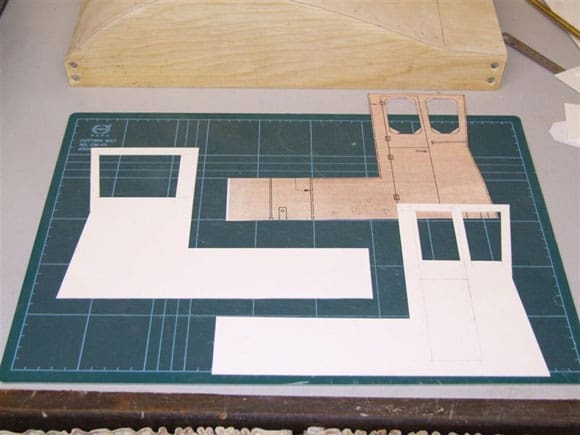
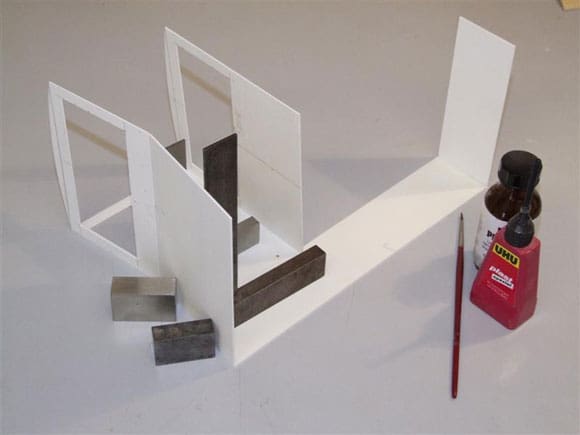
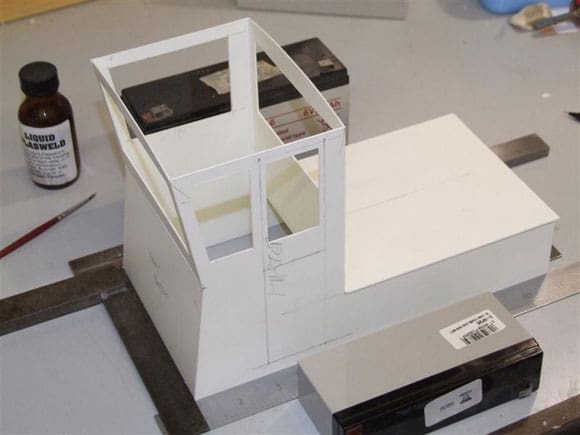
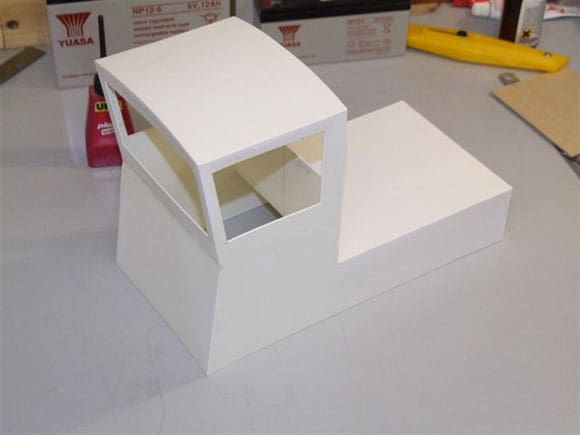
I also cut out the superstructure profile from the plan. Instead of cutting this to the finished shape, I left it overlong so that I could increase the length to keep the proportions correct. Photo 27 shows the cut out plan pieces and two of the superstructure halves ready for the next step. Note the window arrangements. Where there is no door, the window is full-size. I ended up building one superstructure with the door on one side and the other with the door on the opposite side. I would like to say this was deliberate on my part, but would have to deny it!
After cutting out the relevant parts from the templates, construction began. UHU Plast Special styrene adhesive was used on the edges of the plastic card and after positioning, the joint was wiped over with Liquid Plasweld solvent glue to give a neat joint and allow capillary action to help draw the liquid solvent into the joint, Photo 28. Note the use of squares and blocks to keep everything true.
Photo 29 shows the rear superstructure deck being fitted. Again, the whole superstructure is held square while the solvent adhesive dries. Incidentally, the outline of the door is scored into the plastic so that it shows when the superstructure is painted. Strips of plastic card were cut and fitted around the top of the wheelhouse to provide an extra gluing area for the wheelhouse roof. Photo 30 shows the wheelhouse roof in place and trimmed to fit.
I built the superstructure from plastic card I had in stock. This was 1mm, but 1.5mm (1/16in) would have been more suitable, but I wasnt too worried about rigidity as there are more structural parts to fit which will help to brace the superstructure. Next time Ill make up some of the fittings for the superstructure and do some work on the deck.
Well, thats all for this month. In addition to the Springer tug build, next month Ill cover the marine activity at the Southern Model Air show. If you wish to get in touch please do so via the Editor or I can be contacted at [email protected]. Until next month, happy modelling!




